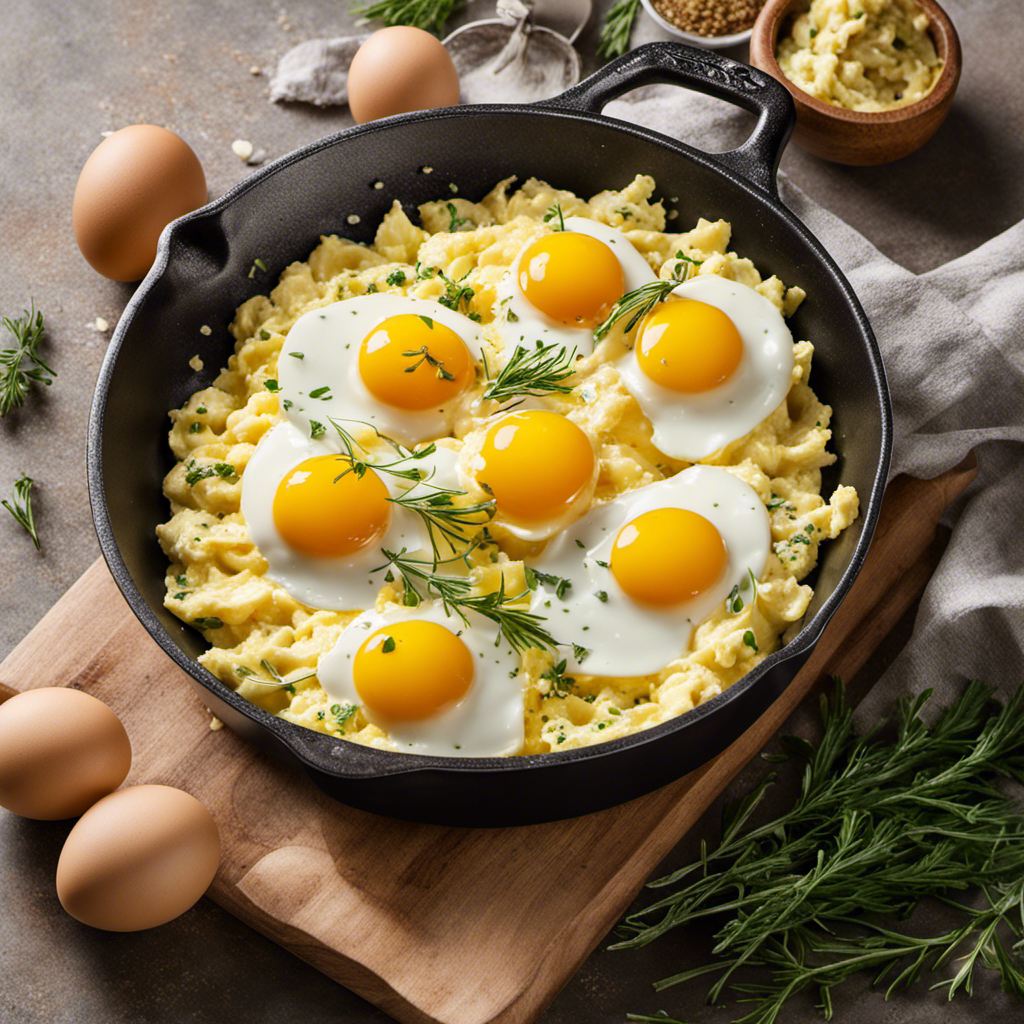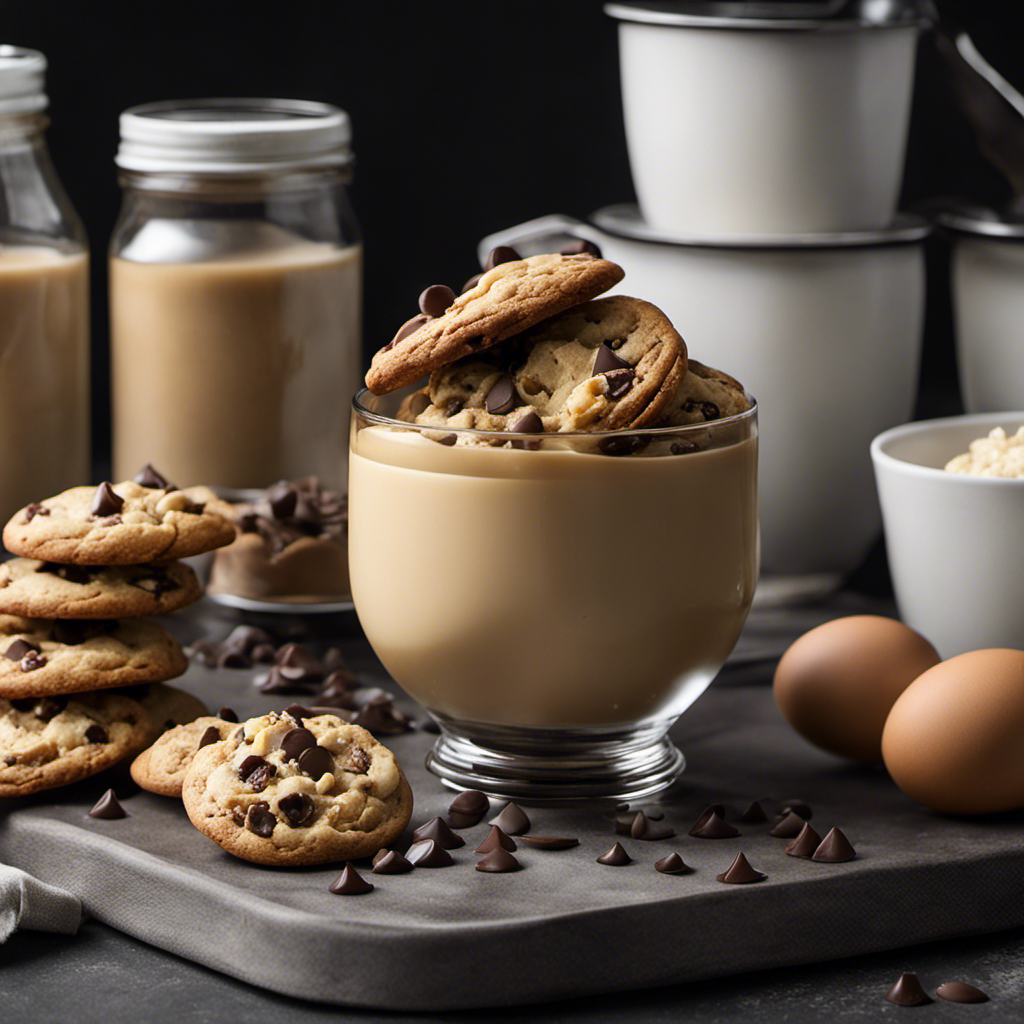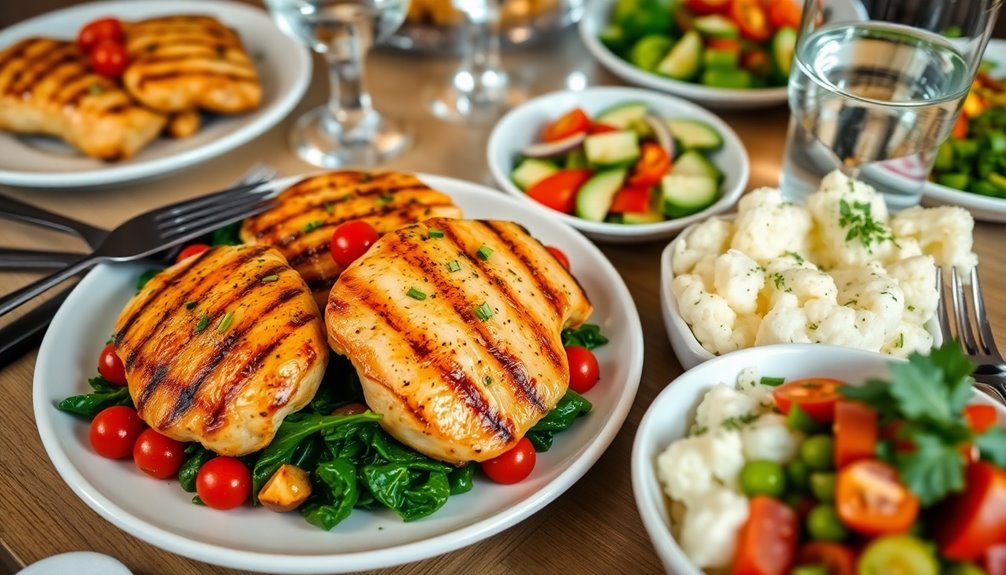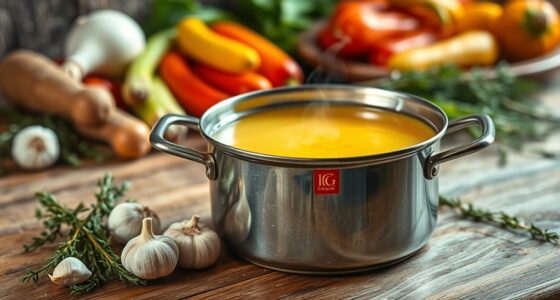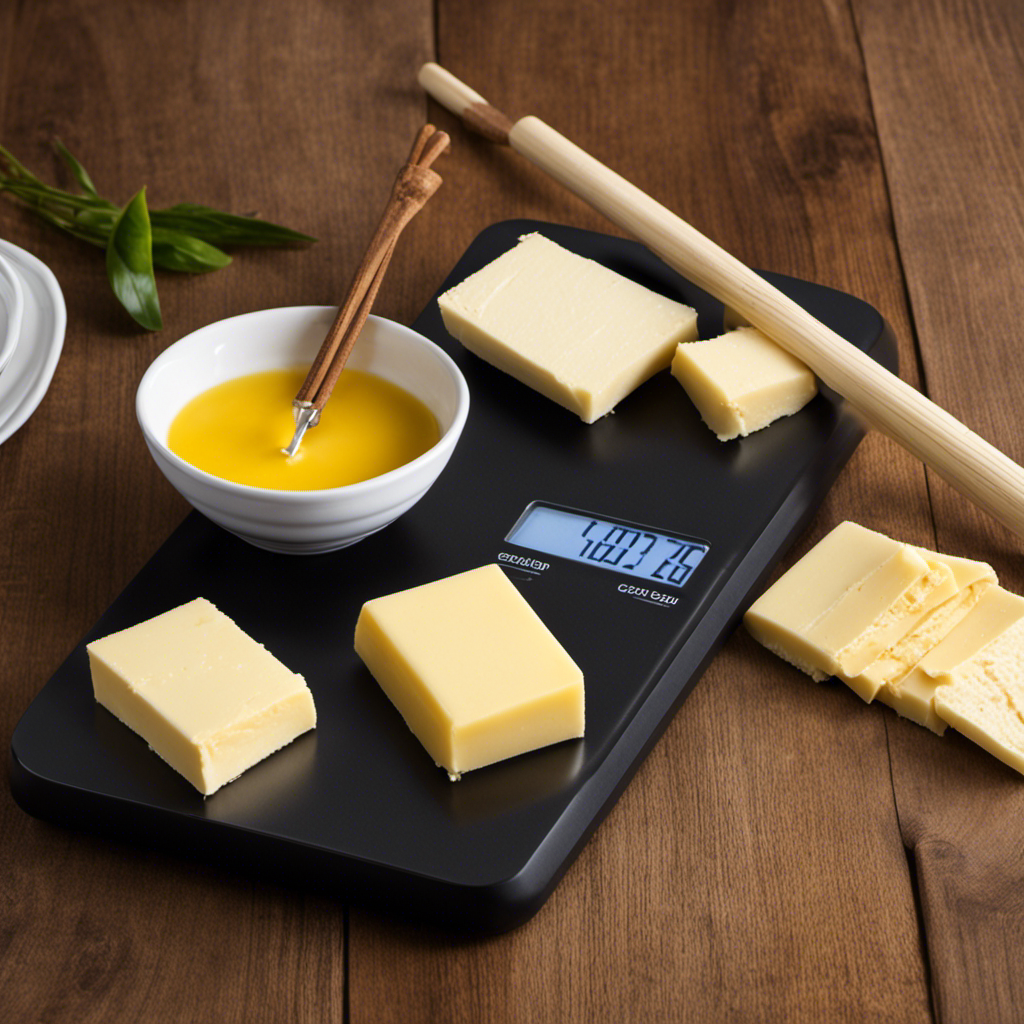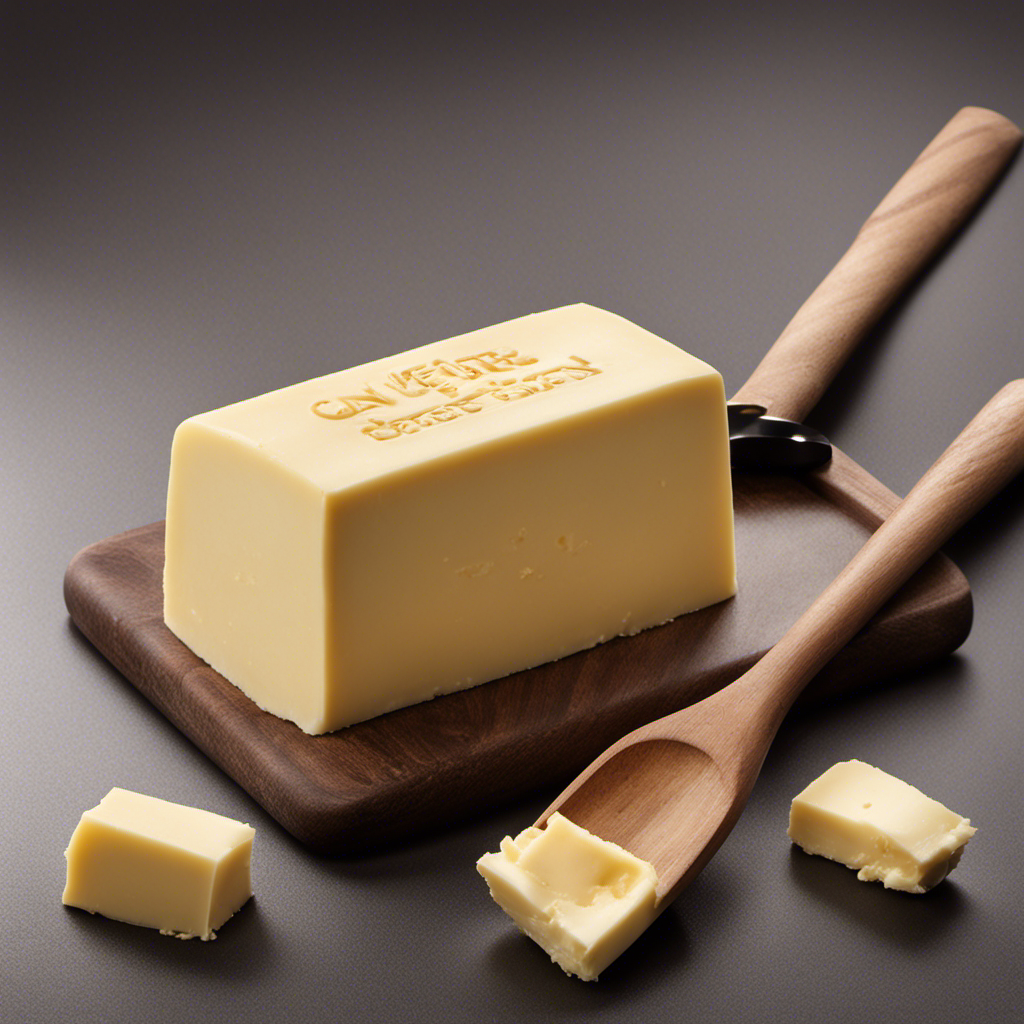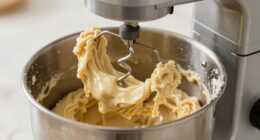Do you want to enjoy delicious eggs without the added butter? You’re not alone! In fact, studies show that more than 25% of people are looking for healthier alternatives to cooking eggs with butter.
Luckily, there are plenty of options available that are both nutritious and flavorful. In this article, we will explore different substitutes for butter, such as olive oil, coconut oil, avocado, ghee, and plant-based spreads, to help you create tasty egg dishes without sacrificing taste or health.
So let’s dive in and discover the secrets to making eggs without butter!
Key Takeaways
- Vegetable oil and olive oil are healthier alternatives to butter for cooking eggs.
- They contain unsaturated fats that promote heart health and reduce the risk of cardiovascular diseases.
- Olive oil adds a distinct flavor to eggs and can be used for sautéing, roasting, baking, dressings, and marinades.
- Coconut oil and ghee are dairy-free options for cooking eggs, providing unique flavors and various health benefits.
Healthier Alternatives to Butter for Cooking Eggs
If you’re looking for a healthier alternative to butter when cooking eggs, there are a few options you can consider.
One of the best alternatives is vegetable oil, which offers numerous health benefits. Vegetable oil is rich in unsaturated fats, which can promote heart health and reduce the risk of cardiovascular diseases. It also contains vitamin E, an antioxidant that helps protect cells from damage.
When cooking eggs with vegetable oil, you can experiment with different herbs and spices to enhance the flavor and add extra health benefits. For example, adding turmeric can provide anti-inflammatory properties, while garlic can boost the immune system.
Using Olive Oil as a Substitute for Butter in Eggs
If you’re looking for a healthier alternative to butter when cooking eggs, consider using olive oil.
Not only does olive oil offer a range of health benefits, such as being high in monounsaturated fats and antioxidants, but it also adds a distinct flavor to your eggs.
When using olive oil instead of butter, it’s important to adjust the cooking temperature accordingly to prevent burning or overcooking.
Health Benefits of Olive Oil
The health benefits of olive oil include its high levels of monounsaturated fats. These fats are known to promote heart health by reducing levels of bad cholesterol in the blood.
Olive oil also contains antioxidants, such as vitamin E, which help protect cells from damage caused by free radicals. Research has shown that incorporating olive oil into your diet may help reduce the risk of chronic diseases such as heart disease, diabetes, and certain types of cancer.
When it comes to cooking techniques, olive oil is a versatile option. It can be used for sautéing, roasting, and even baking. Its light flavor makes it a great choice for dressings and marinades as well.
Flavor Difference Without Butter
When you’re looking to add flavor to your dishes, consider using olive oil instead of butter. Olive oil can provide a unique and delicious flavor enhancement to your cooking.
Unlike butter, olive oil is derived from pressing olives, making it a healthier option. It contains monounsaturated fats, which have been shown to have numerous health benefits.
In terms of cooking techniques, olive oil can be used in various ways. It can be drizzled over salads, used for sautéing vegetables, or even added to marinades for meat. Its versatility allows you to experiment with different flavors and create a depth of taste in your dishes.
Cooking Temperature Adjustment
To adjust the cooking temperature, you should preheat the oven before placing your dish inside. This ensures that the heat is evenly distributed and the dish cooks properly. Here are three key points to consider when adjusting the cooking temperature:
-
Cooking time adjustment: When using egg substitutes instead of butter, it is important to adjust the cooking time. Since butter has a higher melting point than most egg substitutes, the dish may require less time to cook. Keep a close eye on the dish and check for doneness regularly.
-
Experiment with different egg substitutes: There are various options available such as mashed bananas, applesauce, or yogurt. Each substitute may require different cooking temperatures and times, so it’s best to follow a recipe or experiment to find the perfect cooking temperature.
-
Use a thermometer: To ensure that your dish is cooked thoroughly, use a food thermometer to check the internal temperature. This will help you determine if the dish is cooked to the desired level of doneness.
Transition: Now that you know how to adjust the cooking temperature when using egg substitutes, let’s explore another dairy-free option for cooking eggs: coconut oil.
Coconut Oil: A Delicious and Dairy-Free Option for Cooking Eggs
You can use coconut oil as a delicious and dairy-free option for cooking your eggs. Coconut oil has gained popularity due to its various health benefits. It contains medium-chain triglycerides (MCTs), which are easily digestible and can provide a quick source of energy. Additionally, coconut oil has been shown to increase levels of good cholesterol and promote weight loss.
When it comes to cooking eggs, coconut oil can be used in various techniques. For frying eggs, simply melt a teaspoon of coconut oil in a non-stick pan and cook your eggs as desired. Coconut oil can also be used for scrambling eggs, providing a unique flavor and texture.
In the next section, we will explore the magic of avocado as a creamy and nutritious butter replacement for eggs.
The Magic of Avocado: Creamy and Nutritious Butter Replacement for Eggs
Avocado is a versatile fruit that offers a creamy texture, making it an excellent butter replacement for eggs.
Not only does avocado provide a velvety consistency, but it also brings numerous nutritional benefits to the table. Packed with healthy fats, fiber, vitamins, and minerals, avocado can enhance the nutritional profile of your meals while adding a satisfying richness.
From spreading it on toast to using it in baking and cooking, avocado’s versatility knows no bounds, making it a must-have ingredient in your kitchen.
Avocado’s Creamy Texture
The creamy texture of avocados makes them a great substitute for butter when making eggs. Here’s why:
-
Avocado toast: Spread mashed avocado on a piece of toasted bread for a creamy and nutritious alternative to butter. Avocado provides healthy fats, fiber, and vitamins that can help keep you satisfied and energized throughout the day.
-
Avocado smoothies: Blend avocado with your favorite fruits and a liquid of your choice for a creamy and dairy-free smoothie option. The natural creaminess of avocados adds a luxurious texture to your drink, while also providing essential nutrients like potassium and vitamin K.
-
Health benefits: Avocados are known for their heart-healthy monounsaturated fats, which can help lower bad cholesterol levels. They are also a great source of antioxidants, such as vitamin E, which can protect your cells from damage.
Incorporating avocados into your diet not only adds creamy goodness to your meals but also provides numerous health benefits. So go ahead and enjoy the velvety texture of avocados in your eggs, toast, and smoothies!
Nutritional Benefits of Avocado
Blending avocado with fruits and a liquid creates a creamy smoothie option that is both dairy-free and nutritious. Avocados are not only delicious but also packed with numerous nutritional benefits. They are a great source of healthy fats, including monounsaturated fats that help reduce bad cholesterol levels and improve heart health. Avocados are also rich in vitamins and minerals, such as vitamin K, vitamin E, vitamin C, potassium, and folate. These nutrients play a vital role in supporting a healthy immune system, promoting cell growth, and maintaining healthy skin. Incorporating avocado into your diet can be as simple as adding slices to salads, using it as a spread on sandwiches, or even baking with it. Its versatility in recipes allows for endless culinary possibilities.
| Nutritional Benefits of Avocado | Cooking Techniques |
|---|---|
| Healthy fats | Slicing |
| Vitamins and minerals | Spreading |
| Immune system support | Baking |
| Cell growth promotion | |
| Healthy skin maintenance |
With its amazing nutritional profile, avocado is truly a versatile ingredient that can be incorporated into various dishes to enhance both taste and health benefits.
Avocado’s Versatility in Recipes
Incorporating avocado into your favorite recipes can add a creamy and nutritious element that enhances both taste and health benefits. Avocado’s versatility makes it a great addition to a variety of dishes.
Here are three ways you can use avocado to elevate your meals:
-
Avocado Toast: Spread mashed avocado on whole grain toast for a delicious and satisfying breakfast or snack. The creamy texture of the avocado pairs perfectly with the crispness of the toast.
-
Avocado Smoothies: Blend avocado with your favorite fruits and a liquid of your choice for a creamy and refreshing smoothie. Avocado adds a healthy dose of monounsaturated fats, fiber, and vitamins to your drink.
-
Avocado Salad Dressing: Whip up a creamy salad dressing by pureeing avocado with lemon juice, olive oil, and your choice of herbs and spices. This homemade dressing is a healthier alternative to store-bought options, and it adds a rich and flavorful element to your salads.
Incorporating avocado into your recipes not only adds a creamy and delicious component but also boosts the nutritional value of your meals. So why not give these ideas a try and enjoy the benefits of avocado in your diet?
Ghee: A Traditional and Flavorful Butter Substitute for Scrambled Eggs
To make scrambled eggs without butter, you can try using ghee as a traditional and flavorful substitute. Ghee, also known as clarified butter, has been used as a cooking fat in traditional cuisines for centuries. It is made by simmering butter and removing the milk solids, resulting in a rich and nutty flavor.
Ghee offers several health benefits compared to butter. It is rich in fat-soluble vitamins such as A, D, E, and K, which are essential for various bodily functions. Additionally, ghee contains butyric acid, a short-chain fatty acid that has anti-inflammatory properties and supports gut health. Ghee is also lactose-free and contains no casein or whey, making it a suitable option for those with dairy sensitivities.
Give ghee a try in your scrambled eggs for a delicious and nutritious twist!
Exploring Plant-Based Spreads as a Butter Alternative in Egg Dishes
Using plant-based spreads as a butter alternative can add a unique and flavorful twist to your egg dishes. Not only are plant-based spreads a healthier option compared to dairy spreads, but they also offer a variety of flavors and textures that can enhance the taste of your eggs.
Here are three reasons why you should consider using plant-based spreads in your egg dishes:
-
Health benefits: Plant-based spreads are typically lower in saturated fat and cholesterol compared to dairy spreads. They are also rich in essential fatty acids and nutrients, such as omega-3 fatty acids and vitamin E, which can promote heart health and overall well-being.
-
Flavor versatility: Plant-based spreads come in a wide range of flavors, from classic options like olive oil and avocado spread to more adventurous choices like sunflower seed or pumpkin seed spreads. These spreads can add a unique taste and texture to your eggs, elevating the overall flavor profile of your dish.
-
Cooking techniques: When cooking eggs without butter, plant-based spreads can be used as a substitute to add moisture and prevent sticking. Simply melt a small amount of spread in the pan before adding your eggs. The spread will help create a non-stick surface and add a delicious flavor to your eggs.
Going Beyond Butter: Other Creative Ways to Cook Eggs Without Dairy
There are various creative ways to cook eggs without dairy that go beyond just using butter.
If you’re looking to add creaminess to your scrambled eggs without using dairy, try using non-dairy milk. Almond milk, soy milk, or oat milk can all be used as substitutes for regular milk in scrambled eggs. Simply whisk the eggs with a splash of non-dairy milk before cooking them. This will result in fluffy and creamy scrambled eggs, without the need for butter.
Another option to explore is experimenting with vegetable shortening in egg recipes. Vegetable shortening can be used as a substitute for butter when frying or baking eggs. It adds a rich flavor and helps with browning.
Conclusion
In conclusion, by exploring healthier alternatives to butter, you can create delicious and nutritious egg dishes without compromising on taste.
Olive oil offers a smooth and light texture, while coconut oil adds a delightful tropical flavor.
Avocado provides a creamy and nutrient-rich option, while ghee adds a traditional and flavorful twist to scrambled eggs.
Additionally, plant-based spreads offer a variety of flavors to enhance your egg dishes.
So, why limit yourself to butter when there are so many exciting options to try?
Expand your culinary horizons and elevate your egg-cooking game without dairy.
